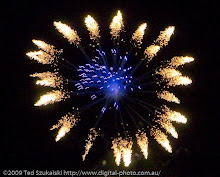June 20
So I'm a counsellor on Lupine deck with the youngest girls (7-10). They are spectacular!
One heck of a learning curve diabetes-wise. Within the 10 days since I've been here, I've gone from zero knowledge to checking my own blood glucose level, checking other people's BG level, giving myself a shot (saline), giving other people their shots (insulin), learning about insulin pumps, insulin pens, long-acting vs. fast-acting, and tons more! Cool stuff.
Oh, and I sleep under the stars for real now. I think I saw a satellite last night, but it crossed the sky in about 12 seconds, so maybe it was something else?
One heck of a learning curve diabetes-wise. Within the 10 days since I've been here, I've gone from zero knowledge to checking my own blood glucose level, checking other people's BG level, giving myself a shot (saline), giving other people their shots (insulin), learning about insulin pumps, insulin pens, long-acting vs. fast-acting, and tons more! Cool stuff.
Oh, and I sleep under the stars for real now. I think I saw a satellite last night, but it crossed the sky in about 12 seconds, so maybe it was something else?


2 Comments:
At 4:16 PM, Jeff said…
Jeff said…
holy smokes! posts! excellent. i hadn't been here for quite a while.
do pray tell: what is a yurt?
(looking it up is no fun)
At 8:13 PM, jennk said…
jennk said…
Many years later! Stealing from wikipedia:
A yurt (from the Turkic languages) or ger (Mongolian) is a portable, round tent covered and insulated with skins or felt and traditionally used as a dwelling by several distinct nomadic groups in the steppes and mountains of Central Asia.[1] The structure consists of a flexible angled assembly or latticework of wood or bamboo for walls, a door frame, ribs (poles, rafters), and a wheel (crown, compression ring) possibly steam-bent as a roof. The roof structure is sometimes self-supporting, but large yurts may have interior posts supporting the crown. The top of the wall of self-supporting yurts is prevented from spreading by means of a tension band which opposes the force of the roof ribs. Yurts take between 30 minutes and 3 hours to set up or take down, and are generally used by between five and 15 people. Nomadic farming with yurts as housing has been the primary life style in Central Asia, particularly Mongolia, for thousands of years.
Modern yurts may be permanently built on a wooden or concrete platform; they may use modern materials such as metal framing, plastics, plexiglass dome, or radiant insulation.
Etymology and translations
Yurt of Kazakhs in the Tian Shan, 200 km northeast of Urumqi at 2100 m a.s.l., August 1991
Old Turkic yurt "tent, dwelling, abode, range" may have been derived from the Old Turkic word ur - verb with the suffix +Ut.[2] In modern Turkish and Uzbek, the word "yurt" is used as the synonym of "homeland" or a "dormitory", while in modern Azerbaijani, "yurd" mainly signifies "homeland" or "motherland". In Russian, the structure is called "yurta" (юрта), whence the word came into English.
Translations
alaçıq/alaçık/alasıq – in use in Azerbaijani, Turkish and Bashkir languages.
гэр (transliterated: ger, [ˈɡɛr]) – in Mongolian simply means "home".[3]
тирмә (transliterated: tirmä) is the Bashkir term for yurt.
киіз үй (transliterated: kiız üi, [kɪjɪz ʏj]) – the Kazakh word, and means "felt house".
боз үй (transliterated: boz üy, [bɔz yj]) – the Kyrgyz term is meaning "grey house", because of the color of the felt.
ak öý ([ɑq œj], "white house") and gara öý ([ʁɑˈɾɑ œj], "black house") – in the Turkmen language, which term is used depends on its luxury and elegance.
qara u'y (IPA: [qɑrɑ́ ʉj]) and otaw ([uʊtɑ́w]) – in Qaraqalpaq the first term means "black house", while the second means "a newborn family" and is used only to name a young family's yurt.
In Hungarian yurt is called "jurta". Besides the more scientific modern-era word "jurta", Hungarians in everyday life still use "sátor" for all tent-like dwellings, which could be the original word Hungarians used for yurts in historic times.
In Bulgarian yurt is called "юрта" (yurta).
"Kherga"/"Jirga" – Afghans call them.
"Khema" (خیمه/ख़ेमा) in Hindustani is the word for a yurt or a tent-like dwelling in India and Pakistan, from the Arabic: خَيْمَة
In Persian yurt is called چادر (châdor)
In Tajik the names are "yurt", "khona-i siyoh", "khayma" (юрт, хонаи сиёҳ, хайма).
өг (ög, Tuvan pronunciation: [œɣ]) is the Tuvan word for yurt.
кереге (kerege, /keɾeɣe/) is the Southern Altai word for a yurt made from felt.
A Yaranga is a tent-like traditional mobile home of some nomadic Northern indigenous peoples of Russia, such as Chukchi and Siberian Yupik.
Post a Comment
<< Home